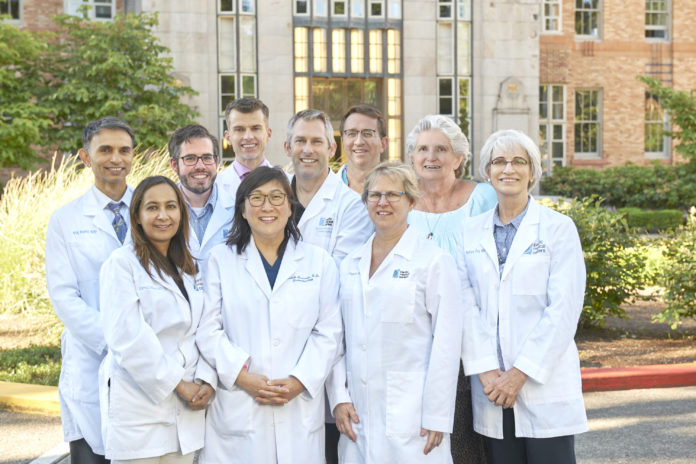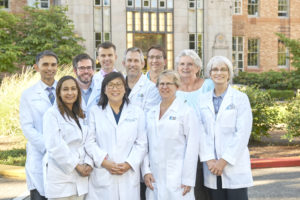
Dr. Atis Barzdins has some advice for women whose mammogram results come back abnormal: don’t panic. “Abnormal doesn’t automatically mean you need a biopsy,” says Barzdins, a hematologist with Pacific Medical Centers. “It could just mean that you need a more precise mammogram or an MRI.”

October is Breast Cancer Awareness month, which means it’s a good time to remind women to schedule a breast exam. “Different professional organizations have different guidelines, but generally women between ages 50 and 74 should get a mammogram every year or every other year,” says Barzdins. “Women with average risk factors should continue until they’re 75.”
The largest risk factor is family history. He says, “We’re most concerned with families that have had multiple cases of breast cancer or ovarian cancer, or members who have had cancer before age 45. In these situations, screening should start when you’re 10 years younger than the youngest person in your family who developed cancer.” Women with one first-degree relative, such as a mother or sister, who has had cancer have double the risk of developing it themselves.
When women are diagnosed with breast cancer, it’s important that their provider asks questions and makes sure they understand their options. “Some women are told they must have chemo, but they should feel entitled to know more than just that,” Dr. Barzdins explains. “They should know how much improvement is expected and be part of the decision-making process. Ask questions about the alternatives and get a second opinion if you’re not feeling quite comfortable.”

Dr. Barzdins points out that the majority of women survive breast cancer, and many do not require chemotherapy. “Talk to your surgeon and oncologist about the most appropriate course of treatment. Find out all the options,” he says. Today, those options include radiation therapy, chemotherapy, surgery, hormonal therapy, targeted therapy and holistic medicine.
In terms of prevention, Barzdins suggests the Mediterranean diet and plenty of vitamin D, both of which have been linked to lower risk of breast cancer. A 2017 study published in the International Journal of Cancer found that women who adhered closely to the Mediterranean diet, which includes fruit, legumes, whole grains, olive oil and fish, were 40% less likely to have post-menopausal estrogen-receptor-negative breast cancer. The diet has also been linked to longevity, stronger bones and lower risks of cardiovascular disease.
Deficiency of vitamin D, meanwhile, is a risk factor for breast cancer according to a 2016 study published in Endocrinology. Vitamin D is obtained through food and supplements or produced in the body as a response to sun exposure.

The most effective protection is early detection. “There are things you can do through diet and exercise,” says Barzdins, “but if you know you are at high risk based on other members of your family, start getting tested early.
With October nationally recognized as Breast Cancer Awareness month, why not schedule your mammogram today?
To learn more about Pacific Medical Centers, visit www.PacMed.org.
Sponsored




















































